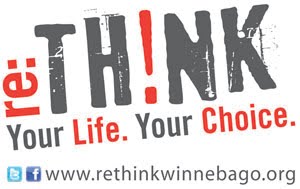In direct opposition to its reputation as a slice of good ol’ American fun, soda and sugary drinks provide both adults and children with a large list of very serious and life-threatening health problems.
The Center for Science in the Public Interest, (CSPI), has presented a list of "Soda Facts 101" on their website, in conjunction with a very eye opening video about the real health risks attributed to the consumption of these types of beverages. Click here to learn more and see this important video:
http://www.cspinet.org/
The Center for Science in the Public Interest, (CSPI), has presented a list of "Soda Facts 101" on their website, in conjunction with a very eye opening video about the real health risks attributed to the consumption of these types of beverages. Click here to learn more and see this important video:
Sugary drinks are the single-largest source of calories in the American diet. Those calories equal 38 pounds of sugar and are devoid of nutrition. Drinking just one or two of these beverages a day increases your risk for Type 2 Diabetes by 25%. Each sugary drink consumed per day increases a child’s risk of obesity by about 60%. Diabetes increases an individual’s possibility for amputations and erectile dysfunction. Obesity increases the risk of heart disease, stroke and many other health problems. These dangers can be easily avoided by eliminating these drinks from our diets. This is a very easy way to greatly reduce the risk of many of these dangerous and chronic illnesses.
Big soda would have us think differently. Our children see soda commercials and logos everywhere. They are on clothing, stuffed animals and featured as advertisers during children and youth television programs. By making the choice away from sugary drinks, we ultimately help our children avoid the awful outcomes of these diseases.
Locally, re:THINK Winnebago is active promoting health lifestyles and nutrition. Check out their EatSmart resources for dining out:
http://www.rethinkwinnebago.org/nutrition_initiatives.html
contributed by guest blogger Kim Hageman






